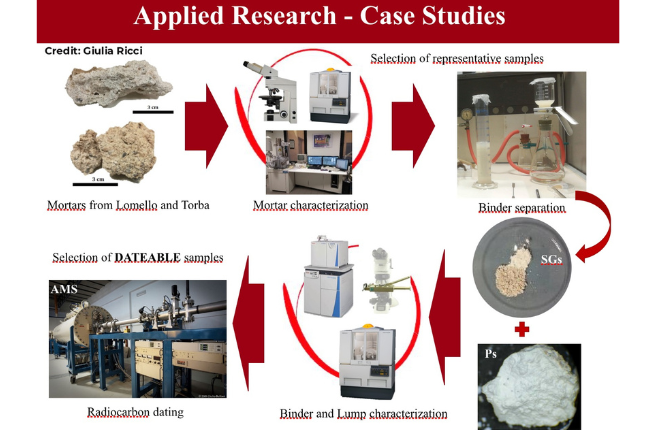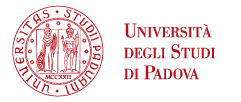How to obtain reliable radiocarbon dating of ancient mortars
Radiocarbon 14C has long been recognized as providing an essential dating method to improve our knowledge about the past (the limit of the technique is ~55,000 years ago).
Measurements have become more and more precise and the method, through the possibility of using mortar as a material indicating the construction date of a building, is an extremely important resource for archaeological studies as well.
However, problems in the correct age estimation of archaeological and historical buildings are common: the main critical point is often related to the separation and selection of the pure binder fraction avoiding contaminants which can severely affect the resulting dates.

A study led by Department of Geosciences of University of Padova, recently published in Scientific Reports, presented an innovative multi‐analytical approach in dating mortars in order to assess the chances of positively dating the mortar before starting the meausures, and produce a binder fraction yielding the most reliable radiocarbon dates possible. This approach is based on the significance of a complete characterization of the studied samples and the research focused on two complex architectural case studies: the churches of Santa Maria Maggiore (Lomello, Pavia) and Santa Maria (Torba, Varese).
As explained by Giulia Ricci, postdoc researcher of the Department of Geosciences of the University of Padova and first author of the article “the 14C method is applied on mortars because the method is based on the carbonation process of the calcic binder: so during the hardening process the lime putty is converted back to a calcium carbonate incorporating the CO2 from the atmosphere that is marked by the isotopic signature of the 14C”.
In this way “the so-form anthropogenic carbonate must be isolated from the other carbonaceous sources as well as other contaminants which could affect the dating process and are often present in the mortar mixing”, Ricci added.
The approach proposed by the authors of this study consists “in different steps which comprise a well done characterization of the bulk materials in order to assess the nature of contaminants by a multi-analytical approach, a separation process of the binder fraction by wet gravimetric sedimentation to remove the main contaminants and a prior characterization of the binder to verify the efficacy of the separation and eventually the presence of other kind of contaminants. Finally thanks to collaboration with the research center Innova-Circe in Caserta radiocarbon dating of the binder is carried on by mass spectrometry”.
In the new published paper in Scientific Reports the main focus is actually the identification of non-anthropogenic contaminants for reliable radiocarbon dating of mortars. “The detailed characterization was carried on by a multi-analytical approach consisting in mineralogical and petrographic characterization X-Ray powder diffraction analysis, scanning electron microscope, measurement of carbon and oxygen stable isotopes and optical cathodoluminescence”, Giulia Ricci said.
In the paper are also presented two representative cases of study, the church of Santa Maria Maggiore in Lomello (Pavia) and Santa Maria of Torba in Varese, showing the effectiveness of these procedures in radiocarbon dating.
“The multi-analytic approach used proved to be a promising protocol for a pre-selection of suitable samples for radiocarbon dating: for example for saving money and time in using mass spectrometry. The novel application of the chosen techniques on extracted binder fraction show how their complementarity can be effective overcoming the limits of each single technique and aiming at proving the effectiveness of the method as shown in the paper we decide to radiocarbon date reliable and not reliable samples after characterization considerations. The results actually showed dates consistent with archaeological expected ages for the former and too young or too old ages for the latter, in accordance with the characterization evidences”, Giulia Ricci underlined.





